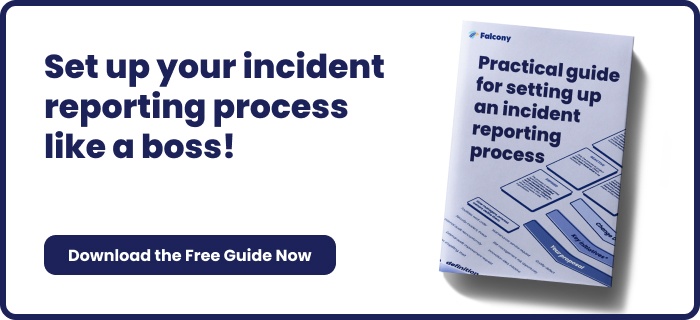Make Your Safety Walks Effective
Last time, I focused on how the 5S system can make your life as a manager easier when it comes to workplace inspections. This time, I will focus on how to boost your safety walks checks by using knowledge from 5S and new technologies.
Before you start your safety walk, it is important to have a plan so you know exactly what to check. It is recommended that you look into your country’s OSH legislation, as well as your company’s rules on HSE. That way, you can make sure that you check everything and stay compliant.
Let’s begin with your checklist, and then I will go over the importance of using technology during your safety checks.
6 Important Checks You Should Make During Your Safety Walk
1. Employee Training
It is essential that your employees know how to remain safe on the job-site. Employees must be well trained for the job and understand the company’s safety rules before being put into action. Make sure that all employees are trained properly.
2. Work Environment
What is the work environment like at your company? A safety check is much more than making sure machines and floors are safe. If you have poor air quality, areas that aren’t properly cleaned, or rooms that are too hot or too cold, you have safety hazards. These hazards can lead to injuries or serious illnesses.
3. Work Process/ Everyday Work Performance
How do your employees' complete day-to-day tasks? Check that no one is making the same motoric movements too many times in a row and that all trucks, forklifts, and equipment are well maintained.
4. Emergency Procedures
Does everyone know what to do in the case of a fire? Ensure that drills are detailed and that you have the right size and amount of fire extinguishers that match the different areas of the company.
5. Exit Signs
Are all your exits properly marked? Make sure that your exit signs fulfil the standards and that your exit markings are clear in the event of an emergency lockdown.
6. Material Handling and Storage
Make sure that all materials are stored properly and handled in the right way. In addition, check that they are well maintained so they don’t become hazardous.
Why You Should Use New Technologies in Safety Walks
The primarily objective of your safety walks should be to make the workplace safer for your employees. While a clipboard with a paper checklist is a good tool for the walk, it doesn’t remember data and log reports for you. You have to do that afterward, which is a time-consuming process. In addition, you have to gather all the reports at the end of a year and create statistics and analytics out of the results.
The Core Benefits of a Digital Checklist in Safety Walks
To put it simply, a digital checklist makes your observations better.
With a digital checklist, you can add pictures of observations made during the walk, and you can write a lengthy description of the observations on spot. That way, you will always remember the details behind an observation.
You can also assign observations to the right people, then and there.
If you notice an area with a safety issue that needs to be fixed fast, it will no longer be a challenge. You can simply assign the observation to the right people in the company and give a deadline for it to be fixed.
A digital checklist will also cut the time you spend on reports in half. The data management system takes care of the reports for you so when you finish the safety walk, the digital tool takes over and does the rest. That way, you are always prepared to present findings and statistics when needed.
As mentioned in the beginning of this blog post, every safety walk needs to be carefully planned. Get information on essential safety checks with our extended safety walks checklist below.
Let a digital checklist and data management software keep track of your observations for you. You can use the software with your smartphone or tablet, making data collection and management easier and more accessible than ever before.
By having a digital checklist and data management software, you get all your reports analysed and put into graphs right away, which means you will have a report only moments after your safety walk is over.
By implementing a digital checklist and data management software, you aren't only starting to be ahead of potential risks. You are also implementing VUCA into your operational strategy. Read more about this term and what it means to your company's strategy in VUCA - The Beginning.
Do you want to learn more about safety metrics and KPIs? Remember to check out our FREE guide:
We are building the world's first operational involvement platform. Our mission is to make the process of finding, sharing, fixing and learning from issues and observations as easy as thinking about them and as rewarding as being remembered for them.
By doing this, we are making work more meaningful for all parties involved.
More information at falcony.io.

Related posts
5 Reasons To Not Change A Thing You Are Doing In Health And Safety
Lately, the media has put a great deal of focus on changes that companies should implement in order...
How To Increase Your Return On Failure
“Mistakes aren’t a necessary evil. They aren’t evil at all. They are an inevitable consequence of...
What Are the Hottest Work Safety Topics Right Now?
Occupational safety has become a number one priority of many succeeding industrial, construction...





